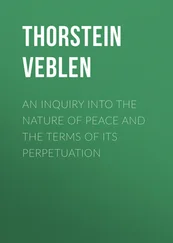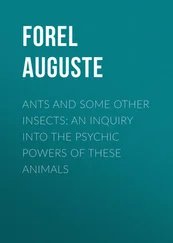Robert Pirsig - Lila. An Inquiry Into Morals
Здесь есть возможность читать онлайн «Robert Pirsig - Lila. An Inquiry Into Morals» весь текст электронной книги совершенно бесплатно (целиком полную версию без сокращений). В некоторых случаях можно слушать аудио, скачать через торрент в формате fb2 и присутствует краткое содержание. Жанр: Современная проза, на английском языке. Описание произведения, (предисловие) а так же отзывы посетителей доступны на портале библиотеки ЛибКат.
- Название:Lila. An Inquiry Into Morals
- Автор:
- Жанр:
- Год:неизвестен
- ISBN:нет данных
- Рейтинг книги:3 / 5. Голосов: 1
-
Избранное:Добавить в избранное
- Отзывы:
-
Ваша оценка:
- 60
- 1
- 2
- 3
- 4
- 5
Lila. An Inquiry Into Morals: краткое содержание, описание и аннотация
Предлагаем к чтению аннотацию, описание, краткое содержание или предисловие (зависит от того, что написал сам автор книги «Lila. An Inquiry Into Morals»). Если вы не нашли необходимую информацию о книге — напишите в комментариях, мы постараемся отыскать её.
Lila. An Inquiry Into Morals — читать онлайн бесплатно полную книгу (весь текст) целиком
Ниже представлен текст книги, разбитый по страницам. Система сохранения места последней прочитанной страницы, позволяет с удобством читать онлайн бесплатно книгу «Lila. An Inquiry Into Morals», без необходимости каждый раз заново искать на чём Вы остановились. Поставьте закладку, и сможете в любой момент перейти на страницу, на которой закончили чтение.
Интервал:
Закладка:
For years we’ve read about how values are supposed to emanate from some location in the lower centers of the brain. This location has never been clearly identified. The mechanism for holding these values is completely unknown. No one has ever been able to add to a person’s values by inserting one at this location, or observed any changes at this location as a result of a change of values. No evidence has been presented that if this portion of the brain is anesthetized or even lobotomized the patient will make a better scientist as a result because all his decisions will then be value-free. Yet we’re told values must reside here, if they exist at all, because where else could they be?
Persons who know the history of science will recognize the sweet smell of phlogiston here and the warm glow of the luminiferous ether, two other scientific entities which were arrived at deductively and which never showed up under the microscope or anywhere else. When deduced entities are around for years and nobody finds them it is a sign that the deductions have been made from false premises; that the body of theory from which the deductions are made is wrong at some fundamental level. This is the real reason values have been avoided by empiricists in the past, not because values aren’t experienced, but because when you try to fit them into this absurd brain location you get a sinking feeling that tells you that somewhere back down the line you have gone way off the track and you just want to drop the whole subject and think about something else that has more of a future to it.
This problem of trying to describe value in terms of substance has been the problem of a smaller container trying to contain a larger one. Value is not a subspecies of substance. Substance is a subspecies of value. When you reverse the containment process and define substance in terms of value the mystery disappears: substance is a stable pattern of inorganic values. The problem then disappears. The world of objects and the world of values are unified.
This inability of conventional subject-object metaphysics to clarify values is an example of what Phædrus called a platypus. Early zoologists classified as mammals those that suckle their young and as reptiles those that lay eggs. Then a duck-billed platypus was discovered in Australia laying eggs like a perfect reptile and then, when they hatched, suckling the infant platypi like a perfect mammal.
The discovery created quite a sensation. What an enigma! it was exclaimed. What a mystery! What a marvel of nature! When the first stuffed specimens reached England from Australia around the end of the eighteenth century they were thought to be fakes made by sticking together bits of different animals. Even today you still see occasional articles in nature magazines asking, Why does this paradox of nature exist?
The answer is: it doesn’t. The platypus isn’t doing anything paradoxical at all. It isn’t having any problems. Platypi have been laying eggs and suckling their young for millions of years before there were any zoologists to come along and declare it illegal. The real mystery, the real enigma, is how mature, objective, trained scientific observers can blame their own goof on a poor innocent platypus.
Zoologists, to cover up their problem, had to invent a patch. They created a new order, monotremata, that includes the platypus, the spiny anteater, and that’s it. This is like a nation consisting of two people.
In a subject-object classification of the world, Quality is in the same situation as that platypus. Because they can’t classify it the experts have claimed there is something wrong with it. And Quality isn’t the only such platypus. Subject-object metaphysics is characterized by herds of huge, dominating, monster platypi. The problems of free will versus determinism, of the relation of mind to matter, of the discontinuity of matter at the sub-atomic level, of the apparent purposelessness of the universe and the life within it are all monster platypi created by the subject-object metaphysics. Where it is centered around the subject-object metaphysics, Western philosophy can almost be dejined as platypus anatomy. These creatures that seem like such a permanent part of the philosophical landscape magically disappear when a good Metaphysics of Quality is applied.
The world comes to us in an endless stream of puzzle pieces that we would like to think all fit together somehow, but that in fact never do. There are always some pieces like platypi that don’t fit and we can either ignore these pieces or we can give them silly explanations or we can take the whole puzzle apart and try other ways of assembling it that will include more of them. When one takes the whole ill-shaped, misfitting structure of a subject-object explained universe apart and puts it back together in a value-centered metaphysics, all kinds of orphaned puzzle pieces fit beautifully that never fit before.
Almost as great as this value platypus is another one handled by the Metaphysics of Quality: the scientific reality platypus. This is a very large monster that has been disturbing a lot of people for a long time. It was identified a century ago by the mathematician and astronomer, Henri Poincare, who asked, Why is the reality most acceptable to science one that no small child can be expected to understand?
Should reality be something that only a handful of the world’s most advanced physicists understand? One would expect at least a majority of people to understand it. Should reality be expressible only in symbols that require university-level mathematics to manipulate? Should it be something that changes from year to year as new scientific theories are formulated? Should it be something about which different schools of physics can quarrel for years with no firm resolution on either side? If this is so then how is it fair to imprison a person in a mental hospital for life with no trial and no jury and no parole for failing to understand reality ? By this criterion shouldn’t all but a handful of the world’s most advanced physicists be locked up for life? Who is crazy here and who is sane?
In a value-centered Metaphysics of Quality this scientific reality platypus vanishes. Reality, which is value, is understood by every infant. It is a universal starting place of experience that everyone is confronted with all the time. Within a Metaphysics of Quality, science is a set of static intellectual patterns describing this reality, but the patterns are not the reality they describe.
A third major platypus handled by the Metaphysics of Quality is the causation platypus. It has been said for centuries that, empirically speaking, there is no such thing as causation. You never see it, touch it, hear it or feel it. You never experience it in any way. This has not been a minor philosophic or scientific platypus. This has been a real show-stopper. The amount of paper consumed in dissertations on this one metaphysical problem must equal whole forests of pulpwood.
In the Metaphysics of Quality causation is a metaphysical term that can be replaced by value. To say that A causes B or to say that B values precondition A is to say the same thing. The difference is one of words only. Instead of saying A magnet causes iron filings to move toward it, you can say Iron filings value movement toward a magnet. Scientifically speaking neither statement is more true than the other. It may sound a little awkward, but that’s a matter of linguistic custom, not science. The language used to describe the data is changed but the scientific data itself is unchanged. The same is true in every other scientific observation Phædrus could think of. You can always substitute B values precondition A for A causes B without changing any facts of science at all. The term cause can be struck out completely from a scientific description of the universe without any loss of accuracy or completeness.
Читать дальшеИнтервал:
Закладка:
Похожие книги на «Lila. An Inquiry Into Morals»
Представляем Вашему вниманию похожие книги на «Lila. An Inquiry Into Morals» списком для выбора. Мы отобрали схожую по названию и смыслу литературу в надежде предоставить читателям больше вариантов отыскать новые, интересные, ещё непрочитанные произведения.
Обсуждение, отзывы о книге «Lila. An Inquiry Into Morals» и просто собственные мнения читателей. Оставьте ваши комментарии, напишите, что Вы думаете о произведении, его смысле или главных героях. Укажите что конкретно понравилось, а что нет, и почему Вы так считаете.











